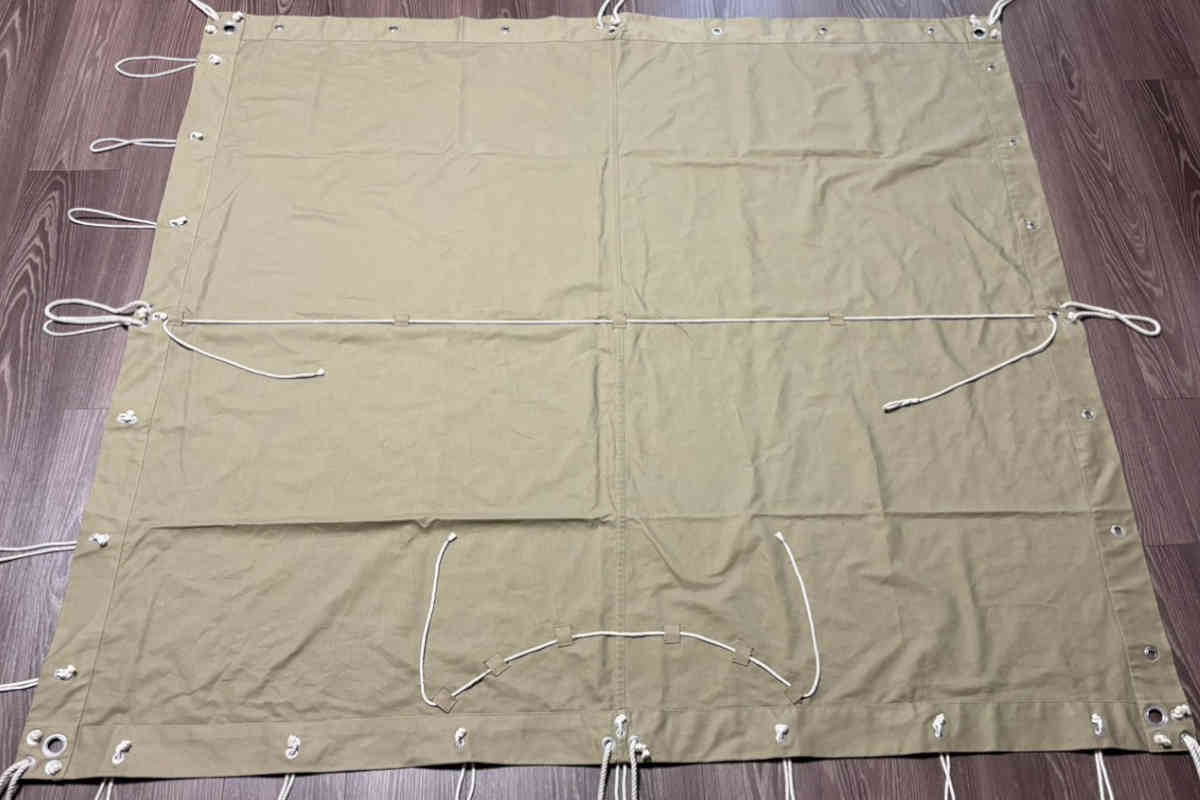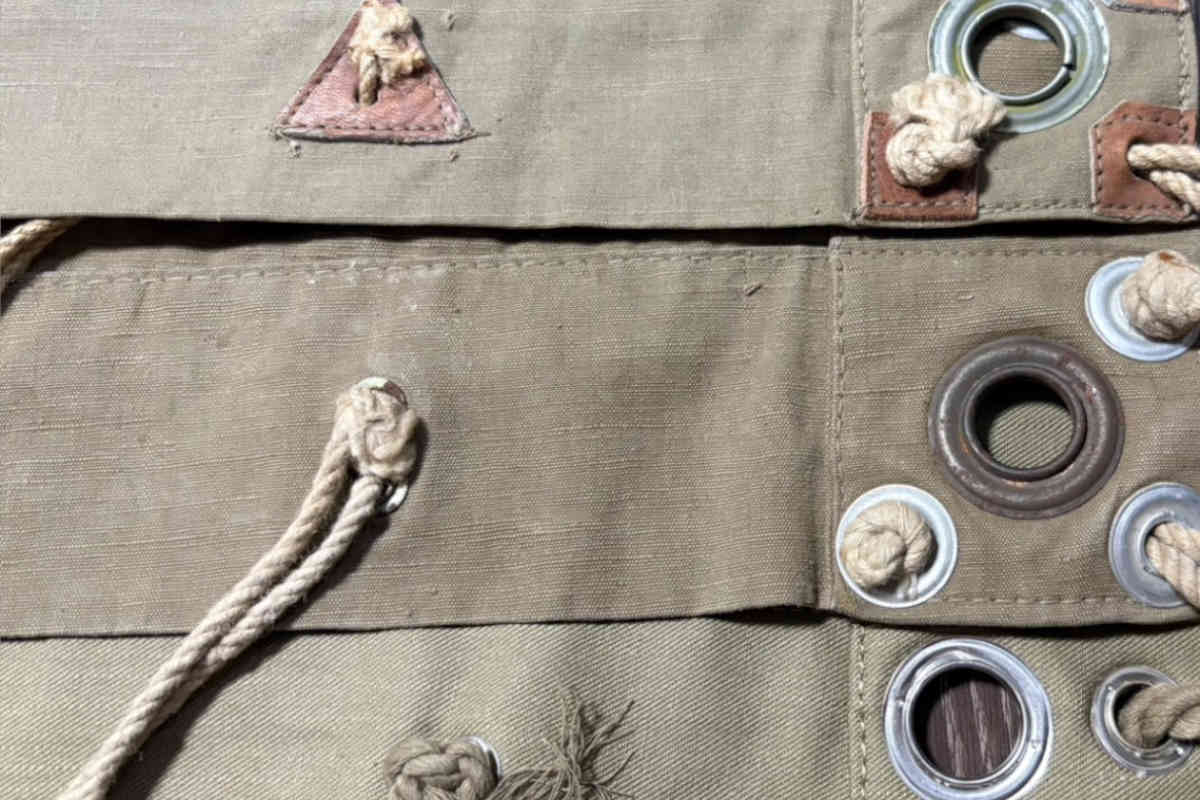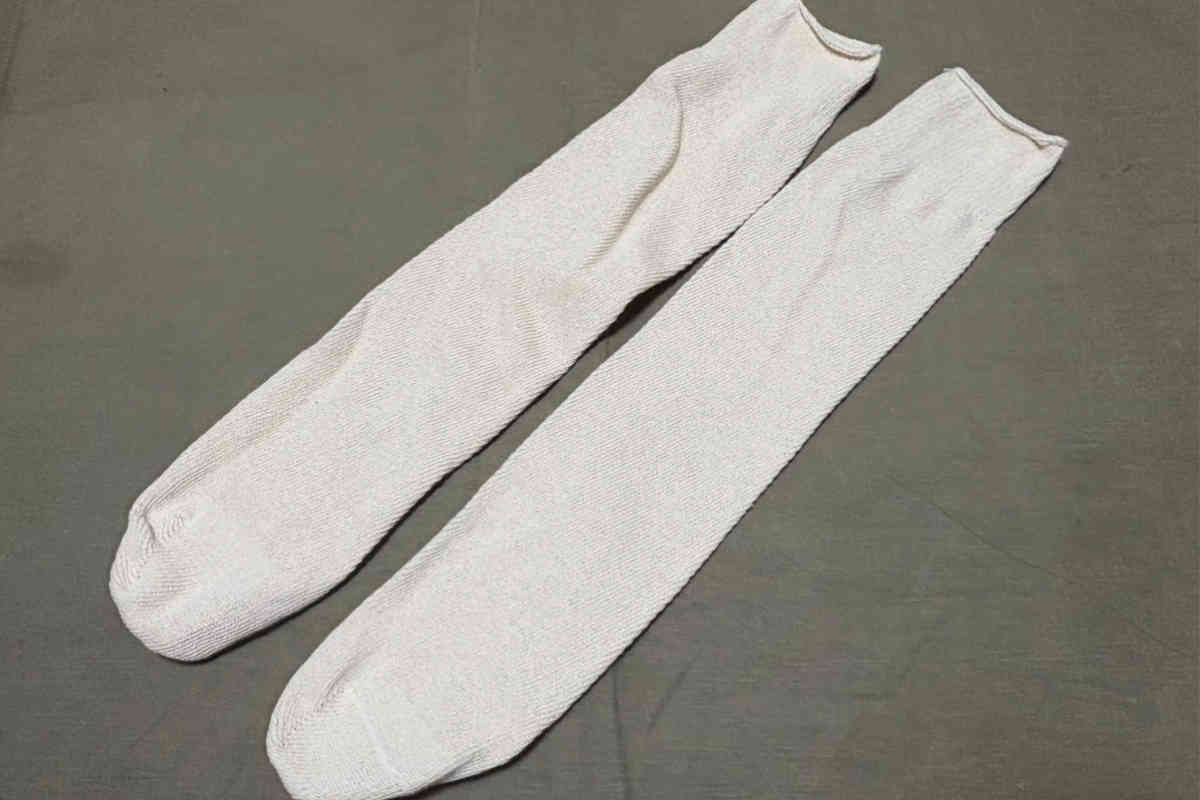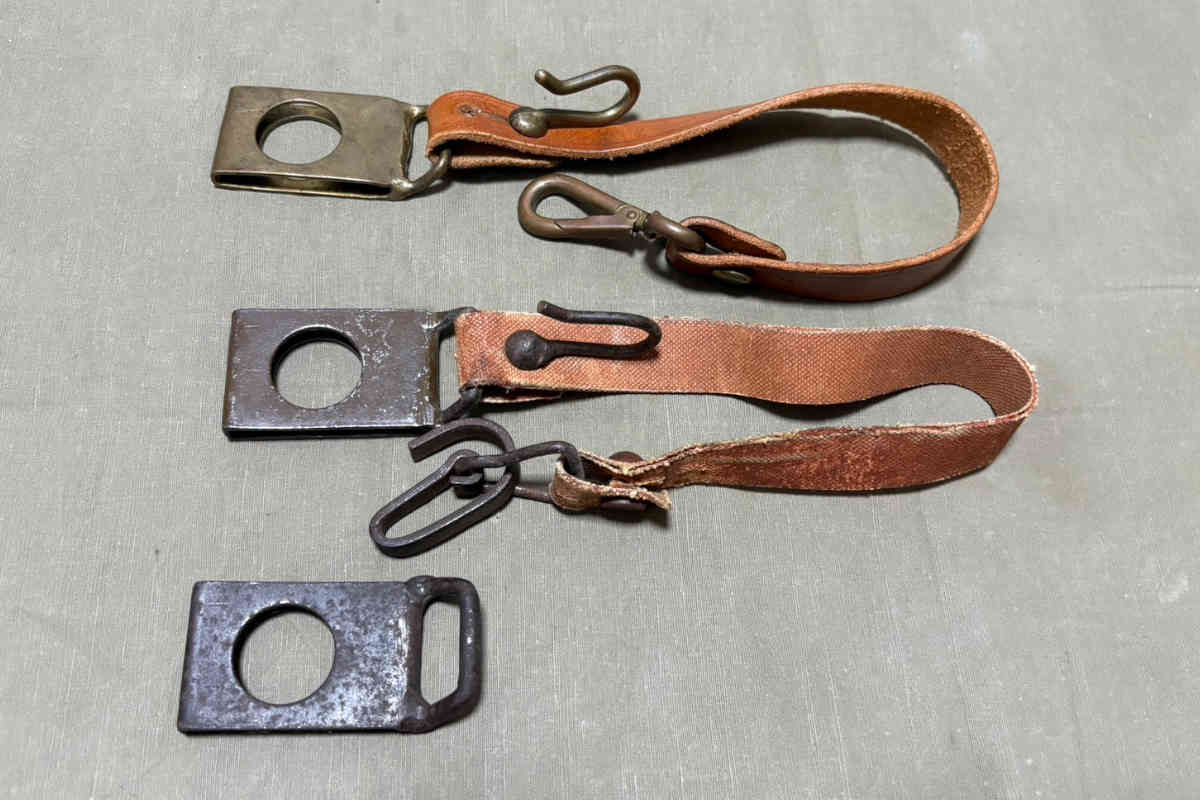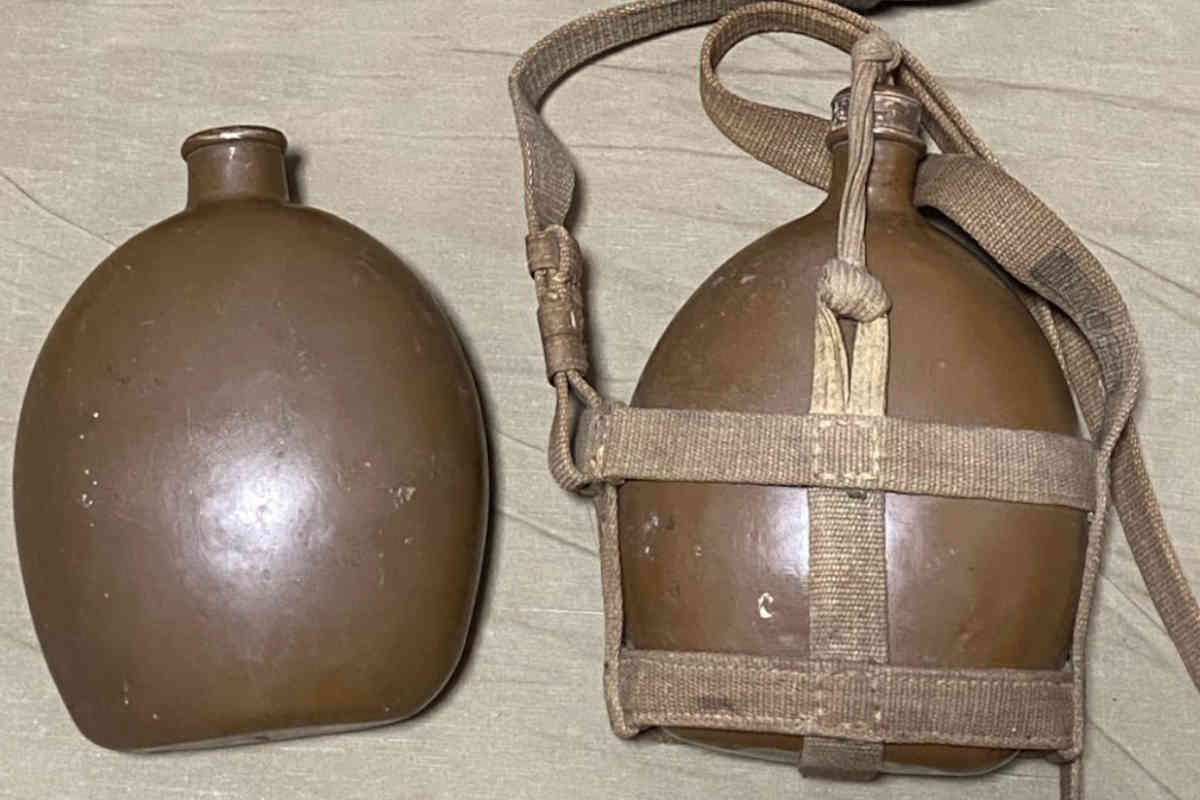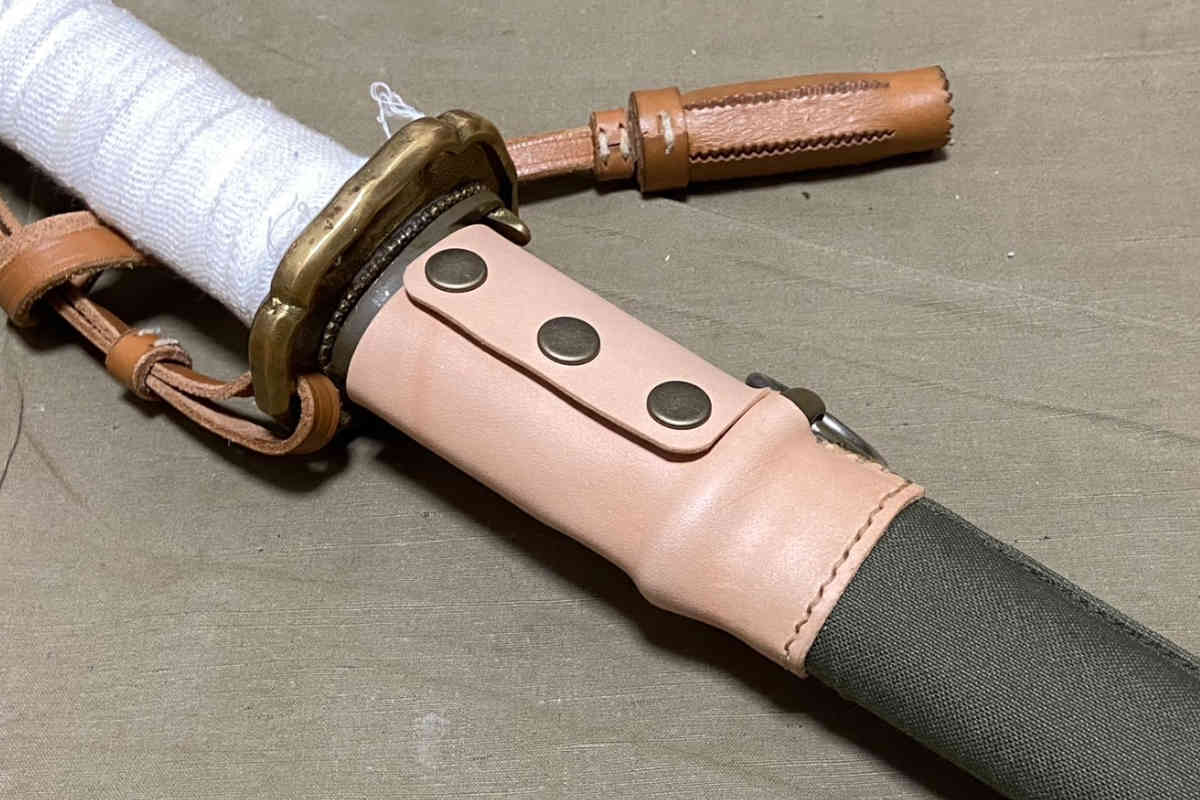Introduce the attire of the Imperial Japanese Army, which encompasses not only uniforms such as military clothing but also personal equipment such as canteens, mess kits, backpacks, and footwear.
Referring to the “Shelter Half Regulations and Usage”and an authentic example, I replaced all the cords on the S&Graf-made Shelter Half. This article is organized as a how-to guide so that you can perform the same modification yourself.
I compared the S&Graf shelter half with an authentic. The fabric and color tone have a fairly good feel, though the cord specifications leave a bit to be desired. Still, as a replica you can use without hesitation, it’s perfectly practical.
What I’d like to introduce this time is a replica of the military socks, known as gun-soku (軍足), worn by soldiers of the Imperial Japanese Army. Strictly speaking, though, it’s not exactly a replica—socks of nearly the same design are still being manufactured and sold today, so this is more of an introduction to those. The gun-soku used by the Imperial Japanese Army differed somewhat from the socks generally sold today under the same name.…
This time, I’d like to introduce the Hinomaru Ring and Sword Hanger Belt used by soldiers authorized to carry swords, specifically those who were classified as sword-bearing enlisted personnel. Among non-commissioned officers and enlisted men, the following types were typically permitted to carry swords: Cavalry NCOs and enlisted men (from Private Second Class upward) Transport Troops NCOs and enlisted men (from Private Second Class upward) Military Police NCOs and enlisted men (from Private First Class…
I've put together an overview of the S&Graf reproduction Type 30 ammunition pouches, along with a summary of the simple restoration work I performed. All of the steps can be done using basic leather‑craft techniques, so even beginners should feel free to give
Here is an introduction to the Type 5 Canteen used by enlisted men and NCOs of the Imperial Japanese Army. There are three variants—Type I, Type Ro, and Type Ha—distinguished by differences in the canteen strap.
The Type 95 sword was a regulation-issue military sword used by non-commissioned officers and soldiers of the Imperial Japanese Army who were required to wear swords, such as cavalry, military police and transport corps. Although I don’t own an original Type 95 sword, I do have a replica made by PK Militaria. Even as a replica, it is quite expensive. After wearing it during outdoor games, the scabbard ended up covered in scratches. I had…
